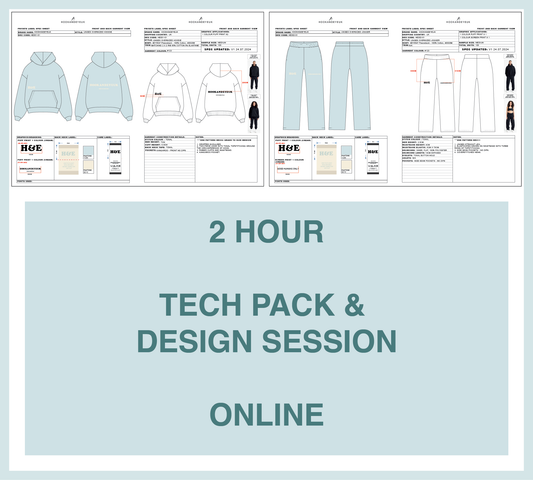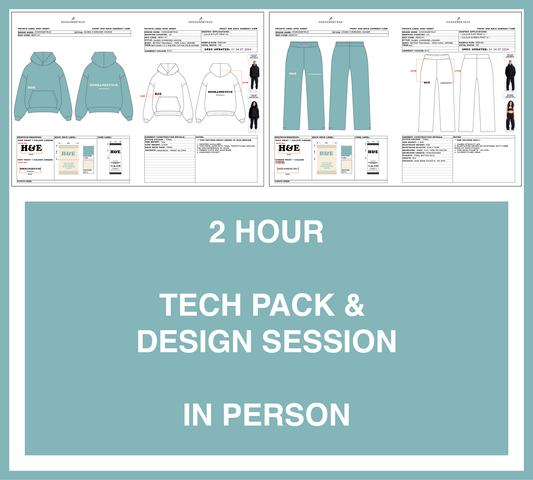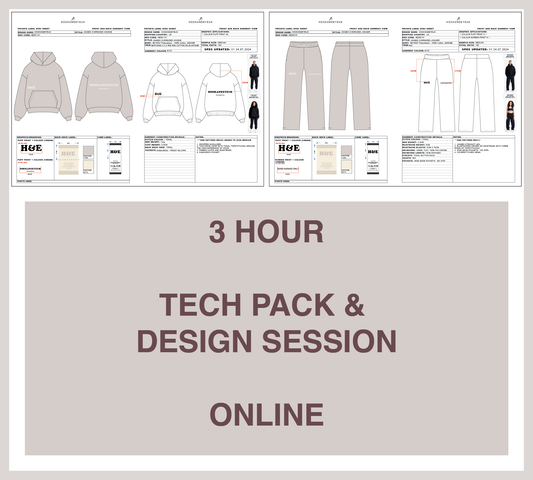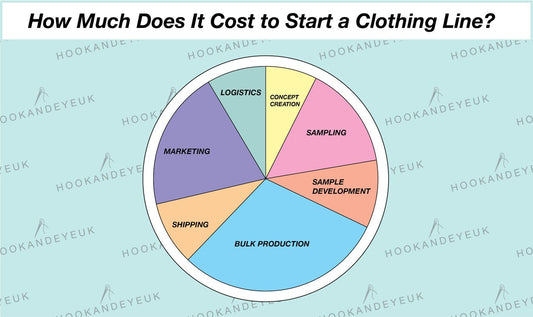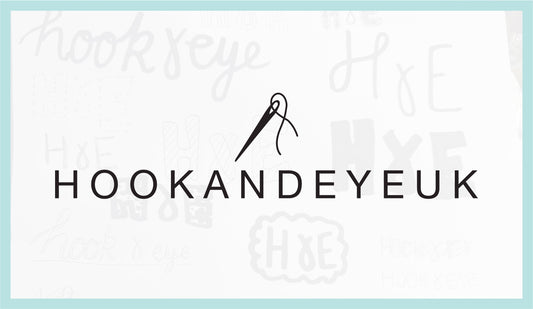Choosing the right fabrics: A guide to finding the best fabrics for your clothing designs.
Not sure which fabrics are best for your designs? Here's our quick guide to popular clothing fabric categories and what they can be used for.
Making the right choices when it comes to fabric will make all the difference to your brand. The fabric you choose for your clothing plays a crucial role in determining the overall look and feel of your garments. From comfort and durability to breathability and drape, each fabric has its own unique qualities that can either make or break your designs. Here's how to choose the right ones.
Importance of choosing the right fabric for clothing
It's crucial to make the right fabric choice for your garments so that they fit and function in the way you want them to. The right clothing fabrics can make or break a garment and there's a lot of factors to consider such as weight, drape, composition and function that will all impact how the garment looks, feels and fits.
Your garment design will look very different on paper to how it does in 3D and a huge factor in making sure that your vision is translated into the finished garment is choosing the right fabric.
Having some knowledge about different fabric types and how they act will also help guide you in the design process and also help you communicate with your designer or fabric supplier better to make sure you get what you want. Below we've put together a handy explanation for the key fabric types, and what garments they are most suited to.
Sweatshirt fabric:
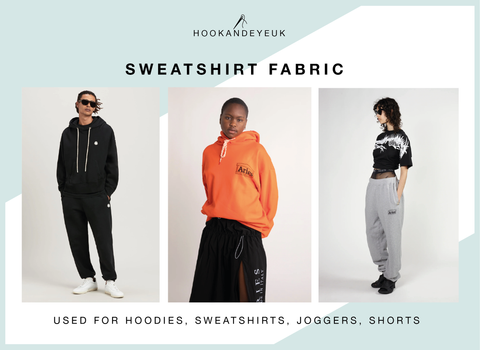
Sweatshirting (yep, that's the name of the fabric type) is the most popular type of fabric used for hoodies, joggers and sweatshirts and it's what we'll all have in our wardrobe. But you might not realise that there are different types of sweatshirting fabric.
Characteristically a sweatshirt fabric has a smooth jersey outer face, and the inner face can be 1 of 2 types; loopback or fleece back. Both of these types appear identical on the outside of the fabric, the difference between the 2 finish types just affects the inside of the garment and how it feels against the body.
So, what's the difference? All sweatshirt fabrics begin their life as loopback. This refers to the small loops of fibres that are formed on the underside of the fabric as it is constructed. Loopback fabric has a breathable, cotton feel and is a popular choice for streetwear or sportswear hoodies, joggers, shorts etc. You might also have heard it referred to as French Terry.

The second sweatshirting type, fleeceback, refers to when the loopback face of the fabric has been brushed, creating a fleecy, fuzzy surface. This gives the inner face of the fabric a super soft, cosy feel and is a popular choice for loungewear, hoodies, joggers etc. Fleeceback sweatshirting tends to have a slightly thicker feel due to its fleecy inside, but this also depends on the weight of the fabric. Another option is a slightly brushed loopback which gives a gentle, soft feel to the classic loopback without being quite so fluffy.
If you're wondering, which one you should use, the answer is that it's completely up to you! Both fabrics are a great choice, and suitable for hoodies, joggers, sweatshirts and shorts, it's entirely down to personal preference on how you want the garment to feel. Check out our sweatshirt fabric library page for some examples of the different types we have available.
Stretch fabrics:
Stretch fabrics is a very broad category encompassing fabrics that, you guessed it, stretch!
Stretchy fabrics are great for achieving tight fitting garments that stretch around the body to create flattering, form fitting designs. Stretch fabrics can be utilised to either add comfort to a garment or to add ease of movement; garments that stretch with you like sportswear or close-fitting designs like leggings and dresses.
What makes a fabric stretchy can either be its structure (how it's made) or its composition (fibre content). If a fabric is knitted rather than woven, this can add a stretch characteristic, due to how the fabric fibres are looped together, allowing slight movement. That's why a 100% cotton jersey (think t-shirt fabric) is slightly stretchy, because the fabric has been created by knitting. Whereas a 100% cotton woven (think shirt fabric) has no stretch.
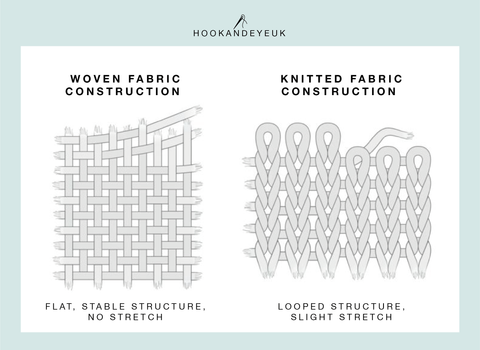
Spandex
If you're looking for something super stretchy like leggings, underwear or gym wear, you'll want to look for spandex in the composition. Spandex is a synthetic fibre that has exceptional elasticity. This means that the fibres stretch when pulled, then will return to their original shape when let go.
Spandex will often be mixed with other fibres to add stretch to the fabric. Quite simply, the higher the spandex content, the stretchier the fabric! Spandex can essentially be added to most fabrics and you'll find it in anything from your t-shirt to your socks. So, let's break down a few popular types of stretch fabric.
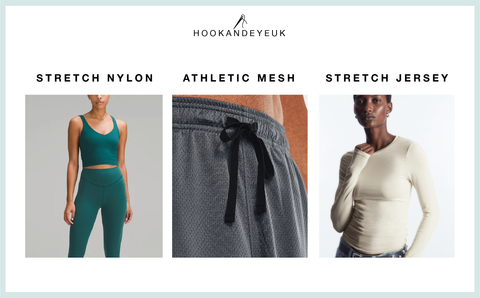
Stretch nylon
Stretch nylon is used for a lot of activewear leggings, sports bras and swimwear. It has a smooth feel and a firm hold. Think brands like Lululemon and Adanola that have tight fitting activewear that flatters your shape.
Ribbed fabric
A ribbed fabric refers to the way in which a fabric is knitted using a 'rib knit', creating a lined texture. The rib structure offers higher stretch and hold and can be used for tight-fitting garments like bras, dresses, fitted tees and shorts.

Athletic mesh
Athletic mesh is often a synthetic fibre such as polyester or nylon, blended with spandex, and is called a mesh due to the way the fabric is loosely knitted, leaving small holes in the pattern of the fabric, creating a breathable surface. Lightweight and stretchy, it is often used for items such as stretch tees and sportswear.
Stretch jersey
Jersey is a broad term to describe the type of knitted fabric you will probably associate most with t-shirts. A stretch jersey fabric such as a cotton elastane is commonly used for t-shirts, underwear, dresses etc and has a cotton feel to it. Heavier jerseys can be used for leggings, polo-shirts and sweatshirts.
Stretch Velour
Soft and luxurious, often with a sheen to its surface, stretch velour is a knitted fabric which usually has a low spandex content, giving medium-stretch capacity. It's used for items such as fitted tees, loungewear and tracksuits (think Juicy Couture). Note - velour is different to velvet as velvet is a woven fabric which does not stretch.
Woven fabrics:
Woven fabrics commonly have quite a structured feel and performance. Think garments like shirts, cargos, jackets, water-resistant tracksuits etc. Here are a few popular types explained;
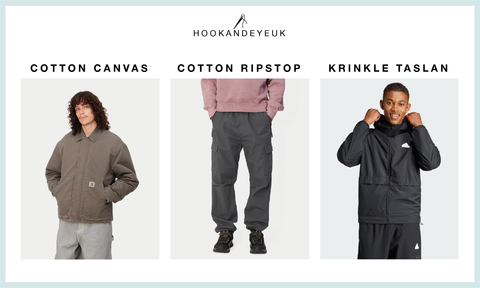
Twill fabric
The term 'twill' refers to the weave that is used to construct the fabric. It is tightly woven and the way its fibres are laid creates a diagonal pattern. It's the most durable type of weave and twill fabric is often used for items such as chinos, cargos, jackets and jeans. With regards to composition, this can be a variety such as cotton, polyester or tencel. Spandex can also be added to create a stretch twill, great for adding comfort to trousers.
Corduroy
Corduroy is a textured fabric with ridges and a velvety feel, corduroy is durable and structured. The ridges are called 'wales', and the wale count per inch is used to tell you how big the ridges are. The lower the wale count, the thicker the ridges, so a 4-wale corduroy has much bigger, thicker ridges than an 11-wale corduroy. This fabric can be used for items such as jackets and trousers.
Krinkle Taslan
Krinkle Taslan is a lightweight woven fabric made from synthetic fibres and is water repellent. It has a smooth surface and is used for items such as tracksuits, zip-up jackets and trousers.
Shirting
Shirting is a term that describes a lightweight fabric - cotton or synthetic - that is most often used for shirts, but also dresses, blouses and linings. It's breathable and comfortable on the skin.
Canvas
Canvas is a sturdy, durable fabric usually made from cotton. It has a structured feel and can be quite stiff in its natural, untreated form. It is a good choice for heavier-weight items such as jackets, trousers and bags, and it's often used by brands such as Carhartt and Stone Island.
Ripstop
Ripstop is a fabric with a woven surface that looks like small squares. Its name comes from its feature that it literally stops rips - each little square is reinforced with fibres so that a rip will not spread beyond that square. It can be made from either synthetic fibres like nylon, which give it a water-resistant, lightweight sporty feel, or from cotton, which is often used for cargos and work trousers. It's great for outdoor garments as it's so durable.
Here's our library of woven fabrics if you want to check out a few examples.
Knit:
Earlier we briefly mentioned knitted fabrics. What we're going to talk about now is knitted garments. What's the difference? A knitted fabric is a flat roll of fabric that has a knitted construction e.g jersey. A knitted garment is what probably springs to mind when somebody says 'knit' to you - items like jumpers, beanies and socks. The difference with these types of items is that the pattern pieces are knitted singularly, not cut from a flat piece of fabric.

The yarns used in a knitted design can be made up of different compositions, for example wool, polyester, acrylic, spandex etc. and this contributes to how the garment feels and how stretchy it is. The possibilities with knit are endless and there are many different types of stitches and patterns that can create different effects.

Adding 'artwork' to a knit
Understandably, you may want to add certain elements to your knitted design to make it unique, like a logo, motif or artwork. Whilst there are different methods for adding artwork or branding directly to knit, it's best to avoid print. The fabric surface is not flat and the print will not fuse well, and print is not stretchy, so any area that will be stretched a lot (think about putting a beanie on your head), will just crack the print and look terrible.
A good way to add design to your knitted garment is to add a jacquard pattern. Jacquard basically means 'knitted in', so the artwork, e.g your logo, will be knitted into the overall design. There are limitations with adding jacquard patterns - the motif will basically be re-created in stitches, so it only works well with simple artwork that is not too detailed or small. At Hook and Eye UK we do a lot of jacquard socks for our customers - it's a great way to add your branding to a super fun accessory!
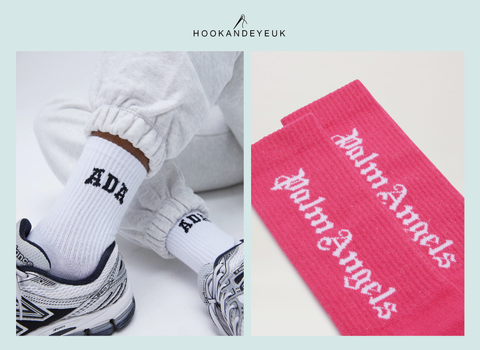
Understanding Fabric Weights
What is GSM and why does it matter?
So you might now have decided how you want your design to look and feel and selected what type of fabric you want to use. The other super important choice you need to make is about the fabric weight, or GSM.
You might see this term around a lot, especially when buying fabrics, sometimes retailers list it under their product info as well. GSM stands for grams per square metre and refers to the weight of the fabric. It is crucial to consider the GSM when making fabric choices. A 200gsm cotton will look and feel VERY different to a 500gsm cotton. A higher GSM will make the finished garment feel thicker and heavier. Without physically feeling the fabric made up into an actual wearable garment, it can be difficult to translate this GSM number into what it will actually feel like when you have your design made up.
At Hook and Eye UK, our designers will always discuss fabric options with you and advise on the best weight to suit your design.
To give an example, a hoodie made from 300gsm French Terry will feel comfortable and medium-weight on your body. A hoodie made from 500gsm French Terry will feel quite weighty, you will feel it heavy on your body.
As a side note, it's good to bear in mind that a higher GSM also as a general rule means a higher price! This is because of 2 factors; the first being that the fabric tends to have more fibres in it (this is what often makes it a heavier weight) - you are literally getting more fabric volumetrically. The 2nd factor is that your finished garments will weigh more, meaning a higher shipping cost.
If you're interested in learning more about the costs to consider when starting your fashion brand, and how to price your clothing properly - here's our handy Fashion Pricing Guide.
Conclusion: Choosing the right fabrics for your brand
To sum up, the clothing fabric that you choose dictates how a garment feels, functions and looks. Choosing a suitable fabric is crucial for ensuring your design works as you imagined.
The different factors to consider when choosing fabrics:
1) composition 2) structure and 3) weight.
GSM indicates the weight of a fabric and effects how heavy and thick it feels on the body.
At Hook and Eye UK we have an extensive fabric library and our designers help to guide our customers to the best fabric fit. If we don't currently have any examples of a specific fabric you want, we can source options for you.
We hope you now have a clearer understanding of the different fabric types and their uses and are ready to apply it to your amazing designs! If you want to see a selection of some of the types of fabrics we have available see our standard fabrics list here.
Bonus tip: Get your tech packs done right - I've not spoken about this above but thought it was worth a mention! Tech Packs are the cornerstone of a good clothing collection. If you're starting a clothing brand, or designing a new line, getting your tech packs done properly at the outset will save you so much time, frustration and money further down the line. Here's a handy guide to getting your Tech Packs done properly, or, if you'd like some professional help with creating your Tech Packs, click here to book a Tech Pack & Design Session with us.
Hope that was helpful, and if you'd like some guidance from us on your next clothing collection, we'll be happy to help, just click here to get in touch.
Love, Bethany H&E


